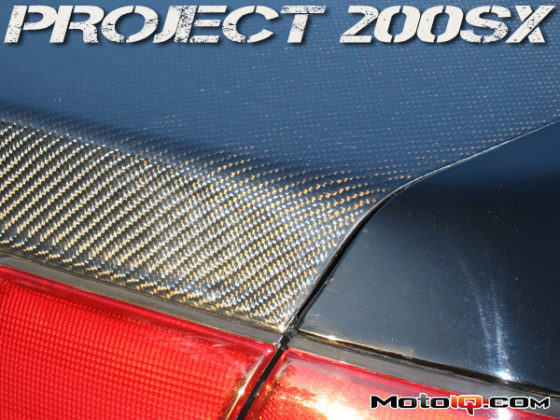,
With our turbo back exhaust in place we returned to the Dyno of XS Engineering to test what gain our new parts gave us. Once our power levels stabilized, we determined that the new exhaust parts had given us a respectable boost of 15 whp bringing us to 304 whp. Not bad for some very simple work. However our knock count had started to rise due to the increases in cylinder pressures our freer breathing engine was developing. On the EVO a knock count of more that three means that the ECU is starting to pull timing and the power will fluctuate. This is shown by a rough looking power trace on the dyno chart as well as registering as knock events on data logging software that XS uses. We were skirting a knock count of 3-5 at higher rpm and things were starting to look rough.
 |
The WORKS exhaust components gave us a 15 whp boost, pretty respectable |
While the car was strapped down, we added another goodie, an ARC airbox. While studying what worked well on the local EVO forum, the ARC airbox was pretty highly regarded among some of Southern California’s local tuners. We also liked it for the bling effect. The ARC arbox is constructed of welded aluminum and simply looks tricker than any other EVO airbox we have seen. Karmen vortex airlflow meters such as the one used on the EVO are notoriously sensitive to variations in airbox and air filter geometry. Often simply installing an air intake will mean that an EVO’s fuel map must be extensively retuned to maintain the same air fuel ratio. The ARC box was known for its minimal affect on the MAF’s reading, another good reason to use it besides looks.
 |
| The ARC air box is perhaps the most beautiful EVO air intake system on the market. The best thing about it is that it had minimal effects on the sensitive karman MAF unlike your typical cone filter that often requires a retune for this reason |
On the dyno it was hard to determine the effect of the airbox. Although the wideband indicated that our air fuel ratios were nearly unchanged, the airbox allowed the turbo to spool sooner, and increased the air flow. The flow increases and subsequent increases in cylinder pressure caused the engine sport a knock count of over 9 and the ECU was pulling enough timing for the power readings to be a wash. The ECU’s timing curve would need a retune at this point if we were to see a gain from the airbox. The airbox simply worked too well for the tune at the moment. As another plus, we noticed a reduction of intake air temperature of 12 degrees, we could not readily explain this as the ARC box partially sucks underhood air but many people have observed this with an ARC box.
Since we had a relatively high knock count we decided to install XS Engineering’s front mount intercooler before retuning. The XS intercooler has a large tube and fin heat exchanger that is wider and thicker than the stock front mount. The tube and fin core has a lower find density than stock. From a casual observance, it would seem like this is a bad thing, but actually the lower density allows cooling air to penetrate more easily into the thicker core, improving efficiency. It also allows more cooling air to pass through the intercooler to reach the engines radiator, helping to improve overall cooling.
 |
| The XS intercoolers more open tube and fin construction allows for more through flow, increasing the amount of air for the radiator |


